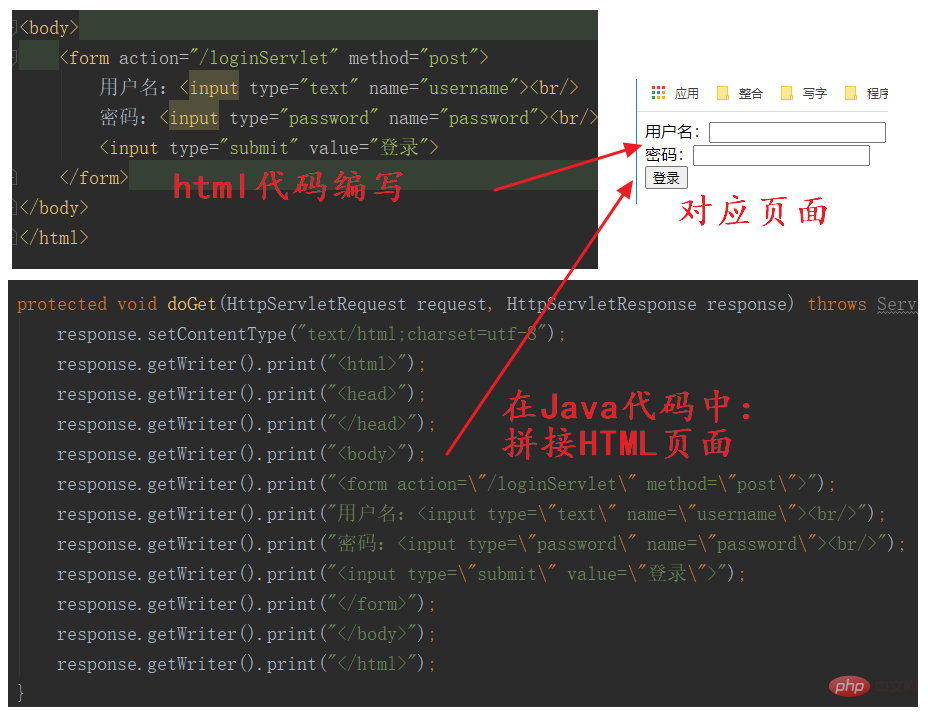Why was jsp eliminated?
- 青灯夜游Original
- 2020-11-06 12:43:2521682browse
jsp was eliminated not because of backward technology, but because of industry trends; now the emphasis is on the separation of front-end and back-end. The front-end writes the front-end code, and the back-end writes the back-end code. There is no need to separate the front-end and the back-end. The front-end and back-end codes are integrated, so the use of jsp is limited.

The reason why jsp appears
What problem does jsp technology appear to solve?
Let’s first look at the following situation:

In the Java code, if the server wants to respond to an HTML page to the browser, the tags need to be spliced into the code.
Such an operation will be very cumbersome. Not only is the operation troublesome, but the readability is also poor.
Is there any way to solve this problem?
jsp technology came into being. In a jsp file, you can write both Java code and HTML code, which is particularly powerful.
jsp definition
The full name of JSP is Java Server Pages, which is translated as java server page. Its essence is a simplified Servlet.
It is a dynamic web page technology standard initiated by Sun and established by many companies.
Dabaihua is a file that can write both Java code and HTML code.
Why was jsp eliminated?
jsp was eliminated not because of backward technology, but because of industry trends.
Now we emphasize the separation of front-end and back-end. The front-end writes the front-end code, and the back-end writes the back-end code. There is no need to integrate the front-end and back-end codes, so the use of jsp is limited.
Of course, it’s not that no one uses it at all, it’s just that there are fewer people using it.
Pain points of using JSP:
Dynamic resources and static resources are all coupled together, and true dynamic and static separation cannot be achieved. The server is under great pressure because the server will receive various http requests, such as css http requests, js, pictures, dynamic codes, etc. Once there is a problem with the server, the front and backends will be played together, and the user experience will be extremely poor.
After the front-end engineer completes the html, a Java engineer needs to modify the html into a jsp page. The error rate is high (because a large number of js codes often appear in the page), and the modification problem This requires collaborative development by both parties, which is inefficient.
JSP must be run in a web server that supports Java (such as tomcat, etc.), and nginx cannot be used (nginx single instance http concurrency is up to 5w), and the performance cannot be improved.
The first time you request JSP, it must be compiled into a servlet in the web server. The first run will be slower.
Every time you request JSP, you access the Servlet and then use the output stream to output the HTML page, which is not as efficient as using HTML directly.
There are many tags and expressions in JSP. Front-end engineers will be stretched when modifying the page and encounter many pain points.
If there is a lot of content in the JSP, the page response will be very slow because it is loaded synchronously.
Based on some of the above pain points, we should move the development weight of the entire project forward to achieve true decoupling of the front and back ends!
The above is the detailed content of Why was jsp eliminated?. For more information, please follow other related articles on the PHP Chinese website!

